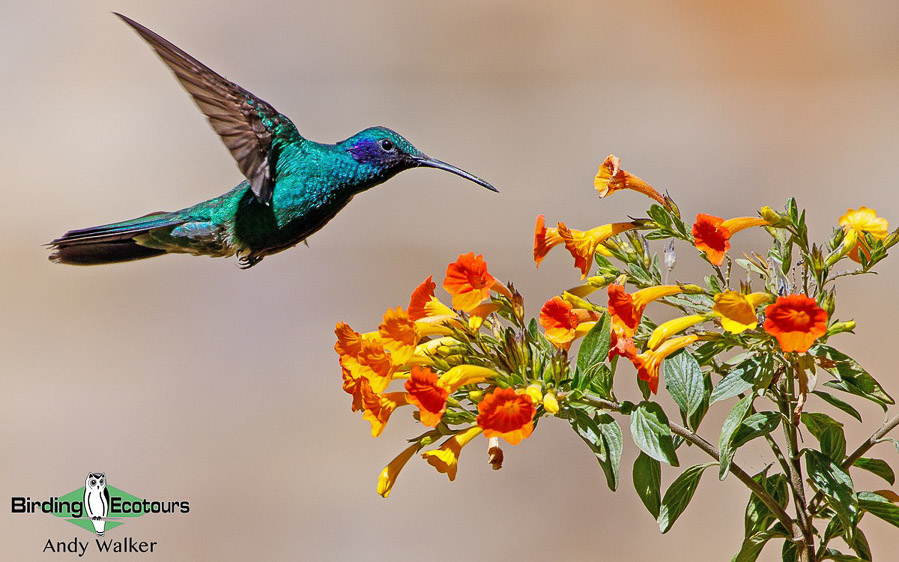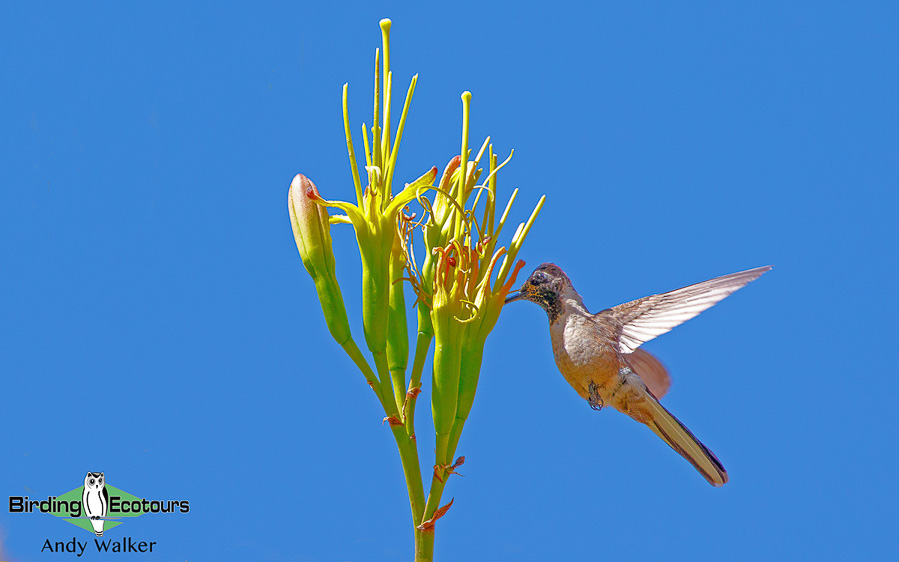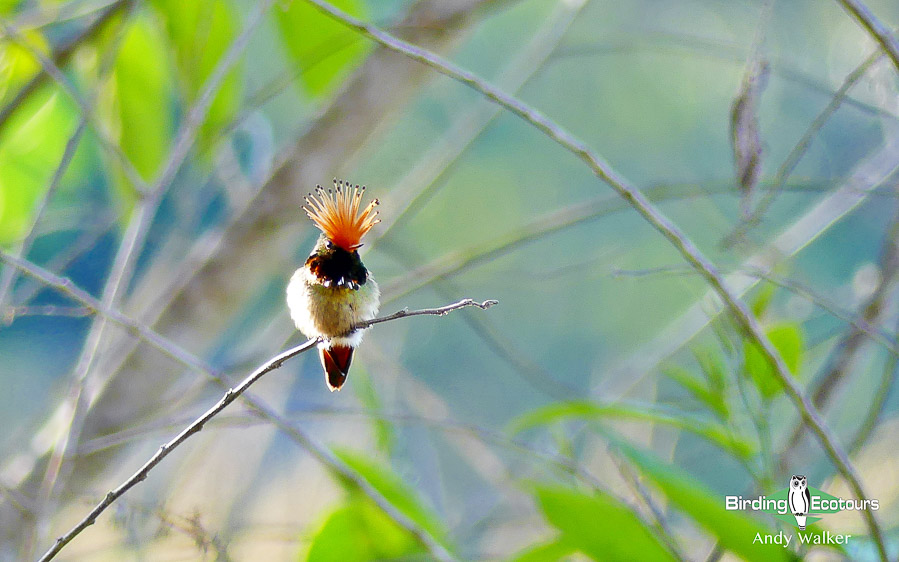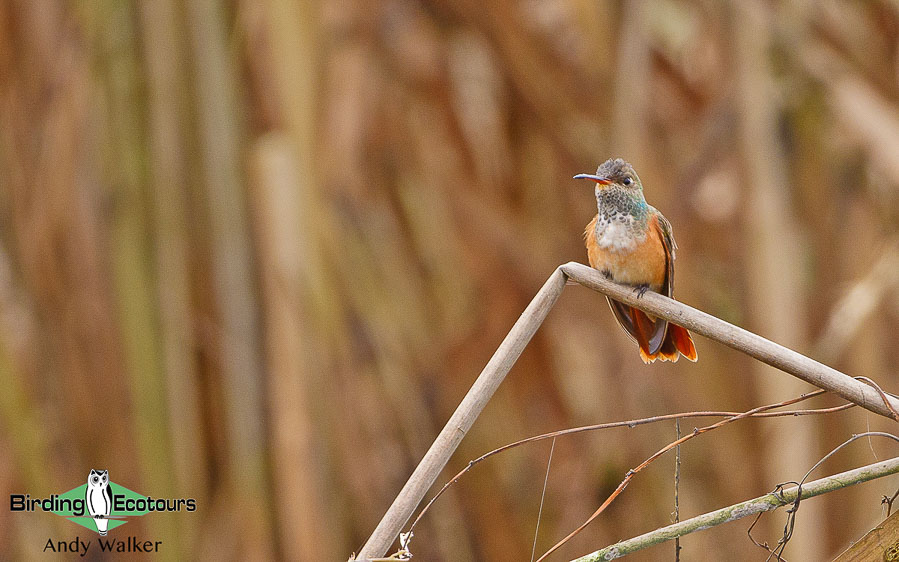Go to All Blogs | Birding Blogs | Neotropical Blogs | Peru Birding Tours | All our birding tours
Written by Eduardo Ormaeche, updated on December 11, 2023
Birding is amazing, no matter where you go and what kind of birds you prefer. For me, highlights are walking down a montane forest road such as the incredible Manu Road in Peru or the equally amazing Santa Marta Road in Colombia, or looking at massive mixed flocks of colorful tanagers and other treasures, or observing more subtle species that are, nevertheless, rare or of major ornithological value, or watching dozens of canopy dwellers and witnessing a spectacular sunrise from a 165-foot-tall canopy tower in the Amazon rainforest in Brazil, or doing a 21-day trip driving through the Andes of northern Peru, ticking a plethora of country endemics. No matter which country, I enjoy birding in South America very much. But one of my absolutely top favorite ways of birding is to stand or sit in front of a hummingbird feeding station watching a charm of hummingbirds buzzing all around me while sipping a good cup of tea.
 Sparkling Violetear
Sparkling Violetear
Hummingbirds are among the most beautiful and diverse birds in the world, and South America has become an obligatory destination to see these exclusively New World species. Despite controversy as to whether feeding hummingbirds is bad from a conservation point of view, I believe that the frenzy of hummingbirds flying all over and around the feeders is not only one of the greatest shows on earth but is also an invaluable learning experience for getting to grips with hummingbird identification. It allows birders to observe the different plumages of males, females and juveniles of the same species feeding at the same time, to recognize the similarities and differences (sometimes only slight!) between species and, last but not least, to enjoy excellent views of some of the most elusive hummingbirds that are much harder to see in the bush than on a feeder.
The most famous hummingbird-watching destination has arguably always been northern Ecuador, due to its compact size, excellent birding infrastructure, long ecotourism history and, of course, the sheer number of hummingbird species (and individuals) that visit some of the well-established feeding stations there. A three-week trip to Ecuador might yield the spectacular amount of 74 hummingbird species, a true record. Since the unfortunate violent period in Colombia’s history ended, this fantastic destination has been on the radar of thousands of birders. Birding has become popular among the locals of Colombia after realizing that birding is a good way to obtain benefits from ecotourism. New lodges and private reserves are widespread throughout the country, making the most spectacular bird species accessible, including a long list of 69 hummingbird species on a three-week trip. Costa Rica is also one of the top countries for seeing hummingbirds at feeders.

For many years Peru was a famous destination because of Machu Picchu, the Manu Biosphere Reserve, the unbelievably bird-rich Tambopata National Park, and other famed sites. However, Peru offers much more than these classic destinations. Today northern Peru has become a fantastic destination to see some of the most sought-after birds in the world, including the most spectacular of all hummingbirds, the Marvelous Spatuletail.
If you visited northern Peru more than 15 years ago, you will remember some good birds, but probably also how difficult it was to track them down and how bad the roads were. Gladly, northern Peru now offers some of the easiest (and least expensive) birding in the country, with 90% of the roads being paved. Today you can reach Chiclayo, the classic rendezvous point for northern Peru birding tours, with a direct flight from Panama City, or from Tarapoto after a one-hour domestic flight (daily) from Lima. The stretch of road between Tarapoto in the Amazon and the Pomacochas cloudforest, which is the habitat of Marvelous Spatuletail, is only 174 miles (280 kilometers) and holds eight hummingbird feeding stations. At the best of times these can provide between 40 and 45 other hummingbird species within only three days, compared to 74 species in Ecuador, but taking three weeks, instead of three days!
You can easily join our existing northern Peru tours to see these hummers, or you can book a special three-day visit to this area to enjoy a spectacular selection of hummingbirds, including the endemics Koepcke’s Hermit and Marvelous Spatuletail, and also Royal Sunangel, Blue-fronted Lancebill, Gould’s Jewelfront, Wire-crested Thorntail, Ecuadorian Piedtail, Rufous-crested Coquette, Black-throated Hermit, Rufous-vented Whitetip, Emerald-bellied Puffleg, and Little Woodstar, among many others.

We invite you to join an easy trip to relax with many brilliant hummingbird species and all the classic Birding Ecotours treats: friendly leaders, comfortable vehicles and hotels, and a few cold beers and nice ginger tea.
Northern Peru is also one of the best places to see a large number of owl species, so we also offer an “Owls of the World” trip there – see details, including a photo gallery from previous Birding Tour Peru: Owls of Northern Peru tours.

However, to combine hummingbirds, owls and all the many endemic birds of northern Peru, it is best just to join one of our standard trips to this area – either the comprehensive one or the short one (in which we also avoid the highest altitudes, good for those who don’t tolerate these well!) – see Birding Tour Peru: Comprehensive Northern Peru and Birding Tour Peru: Northwest and Abra Patricia Mountains respectively for the long and short Northern Peru birding tours we offer annually.
All our other Peru bird tours are shown at here – these include the classic southern routes as well.
